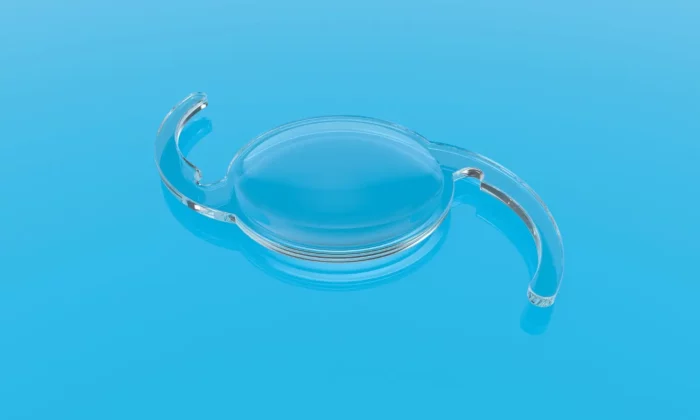In the vast realm of eye care, one question often looms large for those seeking clearer vision: “Which IOL lens is best for me?” It’s a decision that carries weight, as it can influence not only your sight but also your overall quality of life. With an array of options flooding the market, the real conundrum emerges when we dive into the debate between IOL lenses (Imported vs. Indian IOL). So, if you find yourself on this crossroad, wondering which path to take, you’re in the right place. This guide will unravel the intricacies, compare the contenders, and help you discover the finest IOL lens tailored just for you. Let’s embark on this enlightening journey together.
Contents
Understanding IOL Lenses
In the vast realm of ophthalmology, the term “Intraocular Lenses” or “IOLs” holds significant importance. But what exactly are these lenses, and why do they matter?
What are Intraocular Lenses (IOLs)?
IOLs are tiny, artificial lenses surgically implanted within the eye. They replace the eye’s natural lens that is removed during cataract surgery. Made from flexible and biocompatible materials, IOLs are meticulously designed to mimic the light-focusing function of a natural, healthy lens.
Why Do Individuals Need IOLs?
The primary reason individuals opt for IOLs is due to cataracts – a condition where the natural lens of the eye becomes clouded, leading to blurred or foggy vision. Cataracts can significantly impede daily activities and can progress to the point of blindness if left untreated. The most effective treatment for advanced cataracts is their surgical removal, followed by the implantation of an IOL to restore visual clarity.
In essence, IOLs play a pivotal role in modern-day ophthalmology. They offer a promising solution to those grappling with cataracts, paving the way for clearer vision and an improved quality of life. As technology advances and surgical techniques refine, IOLs continue to evolve, providing patients with even better visual outcomes.
Comparing IOL Lenses: Imported vs. Indian IOL
In the search for the best IOL lenses, understanding the unique features, advantages, and limitations of both imported and Indian lenses is crucial. Let’s delve into the distinct characteristics of each to help you make an informed decision.
Features of Imported IOL Lenses
- Advanced Technology: Many imported IOLs come from countries that have been at the forefront of ophthalmological research. As a result, these lenses often incorporate cutting-edge technology and innovations.
- Reputed Brands: Brands from countries with a long-standing history in eye care have built a reputation for quality and reliability, ensuring that their products meet stringent international standards.
- Diverse Range: Imported lenses often offer a wide range of options, from monofocal and multifocal to toric and accommodating lenses, catering to different visual needs.
- Price Point: Generally, imported IOLs tend to be more expensive due to factors like import duties, shipping costs, and the higher manufacturing costs in their home countries.
- Potential Downsides: Beyond the cost, availability can sometimes be an issue, especially for specific brands or types. Additionally, post-surgical adjustments or replacements might require more extended wait times due to international sourcing.
Features of Indian IOL Lenses
- Local Availability: Being domestically produced, Indian IOL lenses are readily available, reducing wait times for surgeries and potential replacements or adjustments.
- Competitive Pricing: Without the added costs of import duties and international shipping, Indian IOLs tend to be more budget-friendly.
- Indigenous Technological Advancements: The Indian ophthalmological sector has made significant strides in recent years. Many Indian companies now produce lenses that rival the quality and technology of their international counterparts.
- Reliability: With strict quality control measures in place, many Indian IOL manufacturers ensure their products meet or even exceed global standards.
- Potential Limitations: While the quality of Indian IOLs has improved dramatically, some niche or highly specialized lens types might still be more readily available from international brands.
Both imported and Indian IOL lenses have their strengths and potential challenges. Your choice should hinge on your specific needs, budget, and the recommendations of your ophthalmologist. As technology and research progress, the gap between imported and Indian lenses continues to narrow, offering patients a wide array of high-quality options to choose from.
Cost Analysis: Imported vs. Indian IOL
When considering Intraocular Lens (IOL) implantation, understanding the financial implications is crucial. Both the quality of vision and the impact on your pocketbook can shape your decision. Here, we present a comparative overview of the costs associated with imported and Indian IOL lenses.
Imported IOL Lenses:
- Lens Cost: Generally, imported lenses come with a higher price tag. To illustrate, a package that includes an imported trifocal lens might range upwards to around 80,000 or more, inclusive of the lens, surgery, and subsequent care.
- Surgical Costs: Surgeries using imported lenses might also be pricier due to the specialized equipment or techniques that might be recommended alongside these premium lenses.
- Post-operative Care: While post-surgery care standards remain high universally, some imported lens packages might include specialized post-operative consultations or treatments, further driving up their overall cost.
Indian IOL Lenses:
- Lens Cost: Domestically produced IOL lenses often present a more economical option. Taking a specific instance, a package with an Indian-made trifocal lens could cost around 45,000-50,000, encompassing the lens, surgical procedure, and post-operative care.
- Surgical Costs: While the surgical procedure’s intricacies remain comparable, surgeries with Indian lenses might be more pocket-friendly due to the reduced lens price and locally sourced accompanying materials.
- Post-operative Care: The care standards post-surgery remain consistent. However, the costs might be relatively lower, reflecting the overall pricing strategy of domestic products.
In summary, while both imported and Indian IOLs offer impeccable vision correction, their cost structures differ considerably. It’s essential to note that a higher price doesn’t necessarily equate to better quality or outcome. If budget is a concern, remember: Indian lenses offer similar quality as their imported counterparts, but the added costs of imports—often influenced by currency exchange rates and duties—can make them substantially pricier.
Key Factors in Choosing an IOL Lens- Imported Or Indian

Selecting the right Intraocular Lens (IOL) is a pivotal decision that can greatly influence one’s quality of vision and overall eye health. Given the array of options and nuances in lens technology, it’s vital to understand and consider specific factors when making this choice. Here are the essential considerations when opting for an IOL lens:
Clarity of Vision
This is paramount. Assess the lens’s ability to provide clear, sharp vision. Some lenses might offer better clarity for distance vision, while others might excel in intermediate or near vision. Depending on your lifestyle and needs (e.g., frequent reading vs. driving), you might prioritize one over the others.
Durability
Consider the lifespan of the lens. It’s crucial to choose a lens made from durable materials that resist wear and tear, ensuring consistent vision quality over the years.
Biocompatibility
The lens will reside within your eye, so its compatibility with the eye’s internal environment is crucial. The lens material should not provoke any allergic reactions or long-term complications.
Type of Lens
There are various IOL types available—monofocal, multifocal, toric, and accommodating lenses, to name a few. Each serves a specific purpose, such as correcting astigmatism or providing multifocal vision. Understand the advantages and potential drawbacks of each type to determine the best fit for your visual needs.
Cost
While the quality and appropriateness of the lens should be a priority, the financial aspect is undeniably important. Weigh the benefits of the lens against its cost, considering both immediate expenses and potential long-term savings (e.g., reduced need for glasses or contact lenses).
Post-operative Outcomes
Some lenses might require minimal adjustments post-surgery, while others might necessitate a longer adaptation period or additional treatments. Understand the post-operative expectations associated with each lens type.
Brand Reputation and Reviews
Sometimes, the experience of others can provide valuable insights. Look into patient reviews and the reputation of the lens manufacturer. A history of positive outcomes and patient satisfaction can be a good indicator of lens quality.
Personal Lifestyle and Needs
Consider your daily activities and hobbies. If you’re an avid reader, prioritize near vision. If you enjoy outdoor activities or driving, distance vision might be more crucial. Tailor your lens choice to fit your lifestyle.
In essence, choosing an IOL lens is a multifaceted decision. Engage in detailed discussions with your ophthalmologist, who can provide personalized advice based on your eye health, visual requirements, and lifestyle. Armed with the right knowledge, you’ll be better equipped to make a decision that ensures clear, comfortable vision for years to come.
Conclusion
Navigating the world of Intraocular Lenses can initially seem daunting with its array of choices and considerations. However, equipped with the right knowledge and professional guidance, finding the perfect IOL tailored to your needs becomes a rewarding journey towards clearer vision. Remember, it’s not just about the lens but ensuring that you receive comprehensive care that prioritizes your overall eye health and visual comfort.
If cataract issues cloud your vision, don’t wait. Cataract Surgery at EyeMantra is designed to bring clarity and brightness back into your life. Book your free appointment now at 9711116605 and embark on the path to better vision and improved quality of life.



